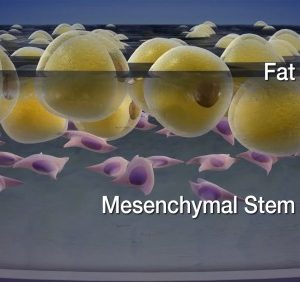- How Daily Prunes Can Influence Cholesterol and Inflammation
- When to Take B12 for Better Absorption and Energy
- Epsom Salts: Health Benefits and Uses
- See What Saffron Can Do for Sleep and Heart Health
- 6 Common Mistakes to Avoid Before Your Physical
- Can Sweating Really Help You Beat a Cold?
- Strengthening Your Relationship: Practical Strategies
- Skip Storing This Everyday Product in the Fridge Door
- Green Tea + B3 Pairing May Boost Brain Health
- Navigating Your Midlife Crisis: Embracing New Possibilities
Stem Cells From Patients’ Fat Can Help Treat Spinal Cord Injuries

Stem cells derived from a patient’s own fat can safely help improve sensation and movement after a spinal cord injury, a new, small study finds.
Patients treated with these stem cells experienced increased sensation from pinpricks and light touches, increased muscle strength and better sphincter control, results show.
“In spinal cord injury, even a mild improvement can make a significant difference in that patient’s quality of life,” said lead researcher Dr. Mohamad Bydon, a neurosurgeon with the Mayo Clinic.
For the study, researchers collected a small amount of fat from the abdomen or thigh of 10 patients with traumatic spinal cord injuries.
The patients all had been hurt in car crashes, falls and other traumatic accidents. Six had neck injuries and four had back injuries.
Over the course of a month, researchers expanded stem cells derived from the fat until there were more than 100 million cells. They then injected the cells into the patient’s spine in the lower back.
Seven of the 10 patients improved as a result of the injections, researchers said.
These included two of three patients who started with no feeling or movement below the site of their spinal cord injury, results show.
Only 5% of people with a complete spinal injury like that could expect to regain any feeling or movement, researchers noted.
This improvement came with no serious side effects, the researchers added.
Researchers also analyzed changes in MRI scans and spinal fluid for clues to why stem cells might aid regeneration and healing of spinal cord injuries.
Stem cells tend to move toward areas of inflammation, in this case the site of the spinal cord injury.
However, it’s not clear how the stem cells interact with the spinal cord, Bydon said.
The new study was published April 1 in the journal Nature Communications.
Between 250,000 and 500,000 people worldwide suffer a spinal cord injury each year, researchers said in background notes.
Patients typically experience most of their recovery in the first six months to a year after the injury, researchers said. Improvement usually stops a year or two after injury.
“For years, treatment of spinal cord injury has been limited to supportive care, more specifically stabilization surgery and physical therapy,” Bydon said in a Mayo Clinic news release. “Many historical textbooks state that this condition does not improve.”
In recent years, we have seen findings from the medical and scientific community that challenge prior assumptions,” Bydon added. “This research is a step forward toward the ultimate goal of improving treatments for patients.”
More information
The National Institutes of Health have more on spinal cord injuries.
SOURCE: Mayo Clinic, news release, April 1, 2024
Source: HealthDay
Copyright © 2026 HealthDay. All rights reserved.










